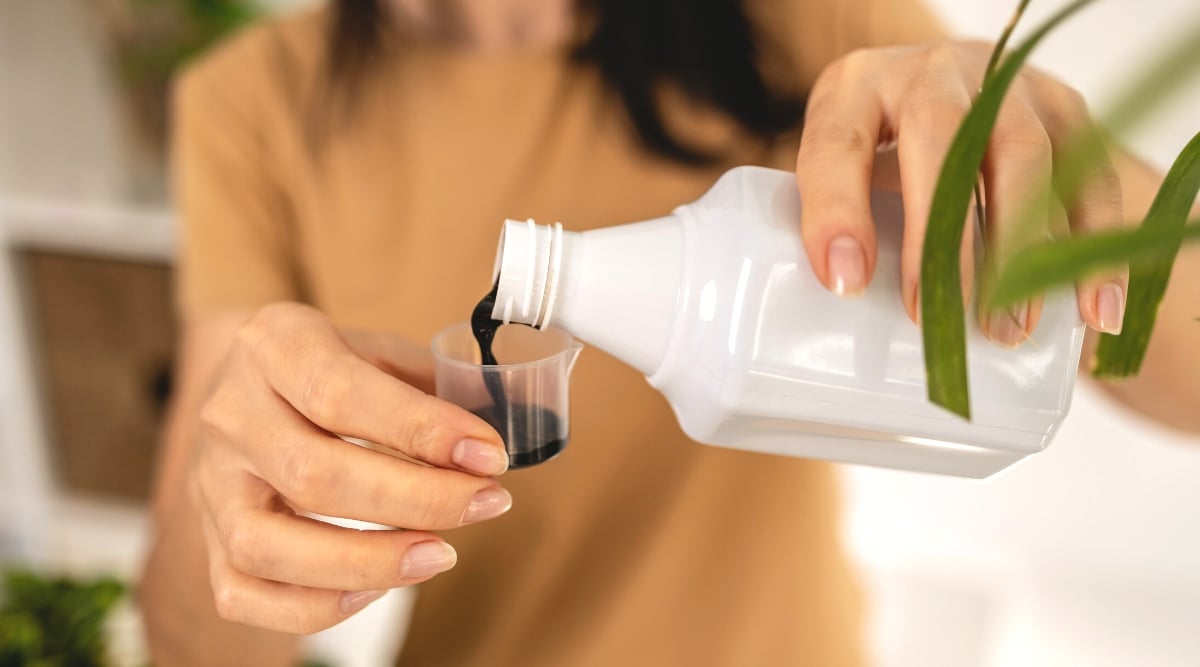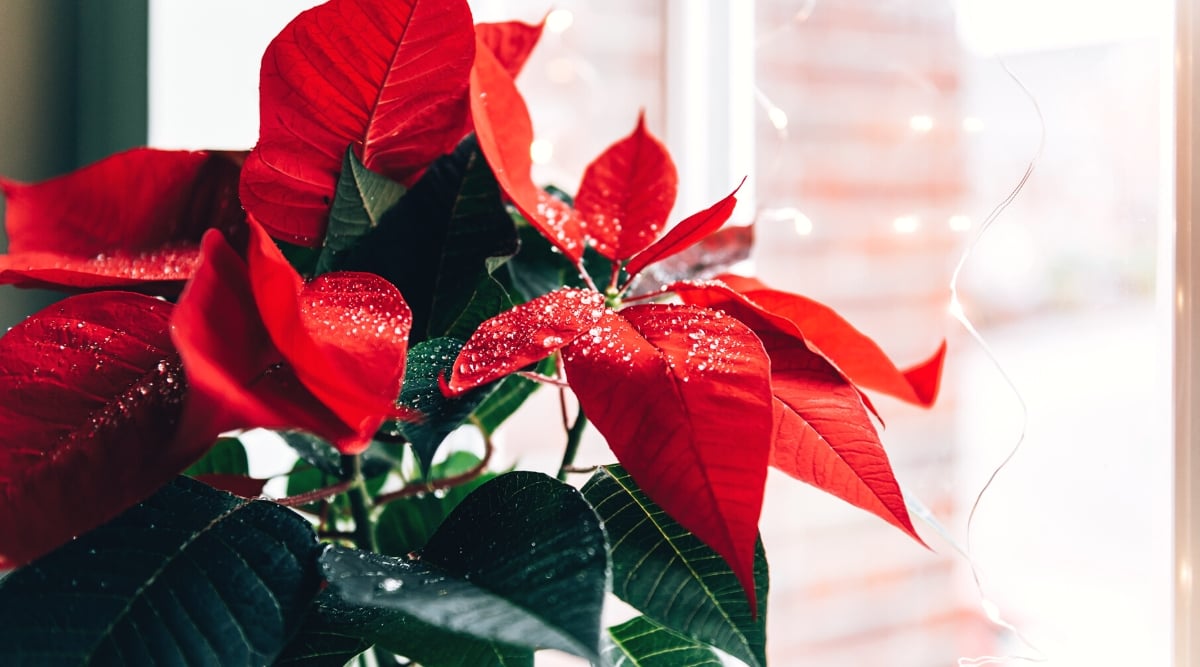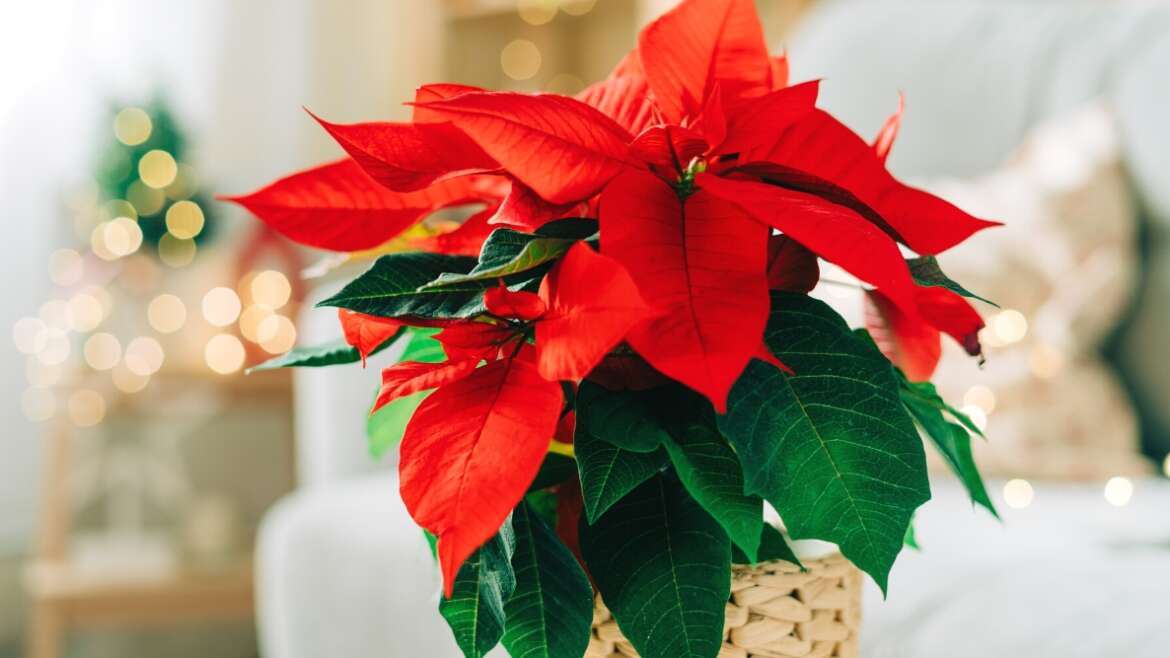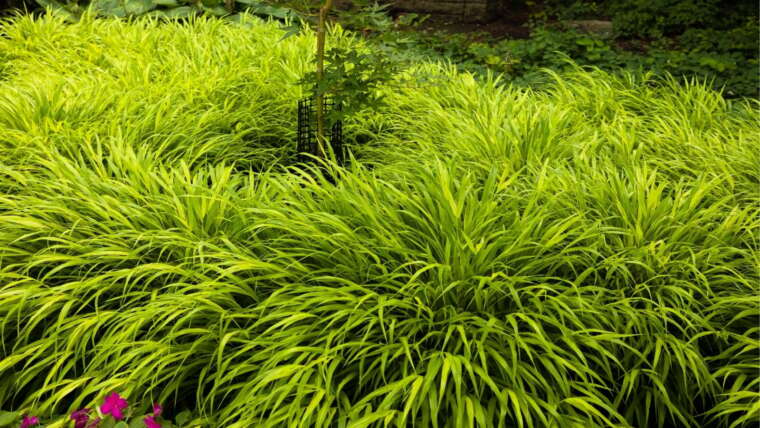For most plant-loving folks, one of the first signs that the holidays are upon us is the assortment of poinsettias that pop up at our favorite plant retailers. These lush, tropical plants have become a trademark of the winter festivities, and I am absolutely here for it.
Regarding care, poinsettias are fairly simple during the brief period that we enjoy their colorful foliage. They like a sunny spot and a moderate amount of water and prefer to be indoors if the weather drops below 50°F. But what about fertilizer?
Let’s discuss a poinsettia’s fertilizer needs and how to keep your plant looking lush and healthy throughout the year.
Why Fertilizer is Important
Fertilizer provides essential nutrients like nitrogen, phosphorus, and potassium for plant growth and health.
For most plants, fertilizer is an important part of maintenance and care. Just as they need water and sunlight, plants need certain nutrients to thrive and produce new, healthy growth. These nutrients come from the soil, and occasionally, we have to replenish those nutrients. We do this with fertilizer.
Most fertilizers are sold based on the amount of three macronutrients they contain. The nutrients nitrogen, phosphorus, and potassium will be listed on the packaging according to the ratio of each nutrient in a particular formula. For example, a fertilizer with a ratio of 10-10-10 is considered to be a balanced, all-purpose fertilizer with the same amount of each macronutrient in its formula.
There are also important secondary and micronutrients like iron, magnesium, and calcium. These are important to different plants in their own right. For our purposes, we will stick to the macros when giving poinsettias what they need to thrive.
Do Poinsettias Need Fertilizer?
 Poinsettias benefit from fertilizer, but whether to apply depends on your post-holiday commitment to plant.
Poinsettias benefit from fertilizer, but whether to apply depends on your post-holiday commitment to plant.
The short answer to this is yes. Poinsettias greatly benefit from the application of fertilizer. The long answer is a bit more complicated since knowing when, what type, and how you should fertilize your plant is important. The first step, though, is to decide upon your level of commitment to this plant.
You don’t need to fertilize if you don’t intend to keep your poinsettia after the holidays. However, if you want to maintain them and make them produce their beautiful colors again next year, they’ll need some extra attention.
Types of Fertilizer
 Choose between organic (slow-release) or synthetic (quick-release) fertilizers.
Choose between organic (slow-release) or synthetic (quick-release) fertilizers.
The fertilizer aisle at many nurseries can be an overwhelming place. Many different formulas are targeted toward specific plant types and goals – for example, more green growth or bigger, stronger flowers.
The two main groups of fertilizers are organic and synthetic. The former is a fertilizer that derives its nutrients from natural, organic sources, and the latter is typically lab-derived. For example, organic sources might include bat or sea bird guano, manure, or various plant meals such as alfalfa meal.
The main difference between the two is their solubility. Most synthetic fertilizers work on a more immediate, short-term basis as they dissolve in water and can immediately be available to the plant. In contrast, organic fertilizers take time to break down and become plant-available but tend to remain in the soil for an extended amount of time. Both types come in different formats, such as liquid, granules, or pelletized formulas.
Which Fertilizer is Best for Poinsettias?
 Choose balanced fertilizer like 10-10-10 for poinsettias, with liquid or granules, and water adequately.
Choose balanced fertilizer like 10-10-10 for poinsettias, with liquid or granules, and water adequately.
Poinsettias will appreciate a good quality fertilizer that is considered all-purpose or balanced. This means all three numbers in the formula ratio will be the same.
This could look like 5-5-5, 10-10-10, or 20-20-20. The numbers represent the proportions of the nitrogen, phosphorus, or potassium in the mix with one another. Balanced formulas will have equal amounts of each type of nutrient in the mix.
I prefer a liquid or water-soluble fertilizer for potted plants, but granules will also work for poinsettias. Water your plant after fertilizing if using a granular fertilizer, but if using a synthetic, do not overfertilize as the soluble fertilizer can cause scorching to the root system if it’s in excess. Organic fertilizers must be wet down to start decomposition and make their nutrients plant-available.
How Often Do Poinsettias Need Fertilizer?
 There is no need to fertilize if you’re not keeping the poinsettia after the holidays.
There is no need to fertilize if you’re not keeping the poinsettia after the holidays.
If you don’t intend to keep your plant after the holidays, you won’t need to do any fertilizing. Just enjoy the beautiful plant while it lasts.
If, however, you plan to keep the plant so that it will produce its colorful bracts next year, fertilize it regularly. A good fertilizing schedule for a poinsettia is every three weeks to once per month.
When is the Best Time to Fertilize Poinsettias?
 Avoid fertilizing poinsettias during bloom; wait until bracts fall, then trim and fertilize.
Avoid fertilizing poinsettias during bloom; wait until bracts fall, then trim and fertilize.
While your poinsettia is in bloom and has its bracts intact, you don’t need to fertilize. The plant is not in an active growing phase, so fertilizer can have a negative effect. You could end up with yellowing leaves and a sickly-looking plant if you over-fertilize when the plant is not actively growing.
If you keep your plant happy by giving it a cool, sunny spot and regularly watering it without leaving the soil soggy, your bracts should last for several months. After the bracts begin to fall, which should be around April, it is the right time to start giving your plant some TLC.
For your poinsettia to bloom again next year, some important steps must be taken. Otherwise, you will end up with a plant that, while pretty, will stay green year-round.
After your plant drops its bracts, it will look like it might die, but this is just the plant entering dormancy. At this time, cut back your plant by about ⅓. If you prefer your plant to remain short and bushy, cut the stems back even farther, leaving only a few leaves per branch.
This is also the ideal time to begin fertilizing. Your plant is about to re-enter an active growth phase and will need some extra nutrients to produce new, healthy, and robust growth. Fertilize your plant at this time and then every three to four weeks until it blooms once again in late fall.
*A note on getting your poinsettia to re-bloom.
Cooling temperatures and shortened daylight hours let your plant know that it is once again time to bloom. If you want to see new bracts and flowers in the coming year, you will need to replicate the natural seasonal change for your plant.
Since poinsettias are tropical plants, they suffer from cold temperatures and will not survive a frost. If you bring your plant outdoors in the late summer, it will naturally experience the cooling and shortened daylight hours of the fall. This will encourage blooming. Just don’t forget to watch the forecast and bring your plant back indoors when it starts to get cold.
How to Apply
 Adjust fertilizer application based on its type.
Adjust fertilizer application based on its type.
How you apply fertilizer will depend on the type you choose. A slow-release granular fertilizer can be used less frequently, as these tend to provide nutrients for a longer time than liquid or soluble fertilizers. You could get away with fertilizing once per month with these, whereas a soluble fertilizer would be better used every two weeks.
Liquid or water-soluble fertilizers are easy to use, as you mix them with water to dilute them and work them into your normal watering routine. With these, you need less potent fertilizer, but you’re using them more often, balancing out fertility as a slow-release version would.
Final Thoughts
Poinsettias don’t have to be tossed out with the Christmas tree. Rather, they can be kept as beautiful house or container plants and even planted in the ground in warmer climates such as zones 9-11. Keeping your poinsettias fertilized and well cared for will encourage them to produce even more of their stunning, colorful bracts in the next year.




